Tuesday 16th September, and Camping Rinlo Costa was part of our original schedule; we arrived mid-afternoon, in the middle of the siesta which necessitated an hours wait before we could check-in. We had stocked up on supplies in Oleiros – at Mercadona, Decathlon and Leroy Merlin. Okay, so the Decathlon and Leroy Merlin purchases weren’t strictly necessary.
Our bungalow is luxurious (by mobile home standards) and the site is around 1km from the coast. But it is so peaceful here.
The little port and fishing village of Rinlo is just a 20 minute walk away and at a similar distance there is a narrow gauge railway station. This railway line runs all the way from Oviedo to Ferrol and it’s closer to a heritage railway than the latest Spanish high speed routes.
The Rinlo railway station looks all but abandoned, as do many of the small village request stops. Nevertheless, trains not much bigger than a bendy bus navigate along the coastal train up to four times a day, rarely on time and often not at all.
Our first trip out was to catch the train to Esteiros from Rinlo. One of four trains per day had us arriving some 5 miles away from Rinlo and our campsite. We then walked the coastal path back to Rinlo, enjoyed a swift beverage at Porto de Rinlo, arriving back at the site for a BBQ tea.
The terrain along the coastline is rugged but the paths are not as demanding as many parts of the UK’s South West coastal path. The landscape is not entirely dissimilar to the coastline of Devon and Cornwall and the Galicians do count themselves as a Celtic people. There is the odd cafe / snack bar on the route we took back to Rinlo.
The weather is still georgeous and as you can see below, the coastline just beautful. This region is called “Green Spain” for a reason but so far the weather has been fantastic and the scenary incredible.
The coastline heading east towards Rinlo.
And below are the views as we arrived in the pretty village of Rinlo.
On Thursday, we headed back to the not-so-pretty station of Rinlo and as seems fairly typical, our train showed a 30 minute delay. As it finally appeared in the distance, it was surrounded by smoke and whilst pulling into the station, it was quite the show as sparks and flames lapped up the sides of the train. This didn’t seem to concern the conductor too much as we boarded the train. Meanwhile, the driver was somewhat more interested in what was happening and we were subsequently all ushered off the train followed by the driver with his fire extinguisher.
It’s safe to say that Rinlo hasn’t seen so many passengers on the platform for many years and since this train (nor any others on this single-track section) wasn’t going anywhere, we abandoned our visit to Ribadeo and headed into Rinlo for lunch.
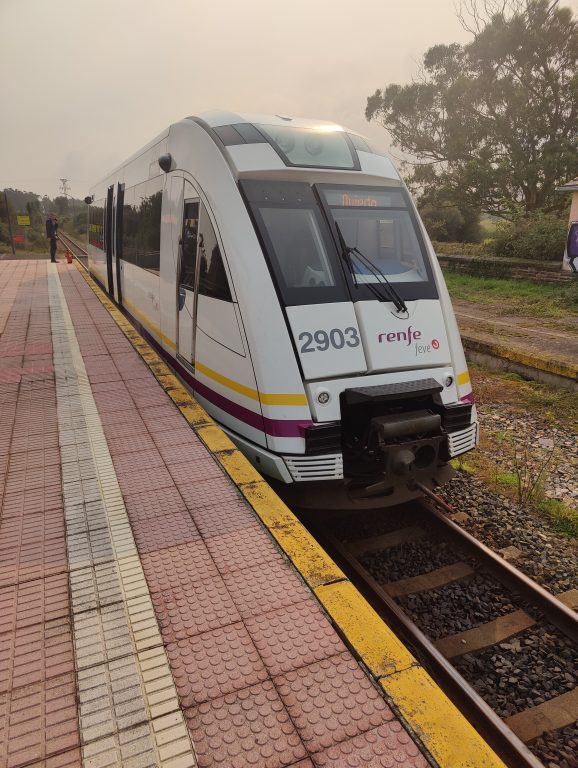
This region of Spain is renowned for the delicacy of barnacles and at 20+ Euros for a plate, it was a popular option. Not for Moe and I – we opted for something a little more familiar with garlic prawns and squid. We ate at Bar Portillo, opposite a far more ostentatious restaurant which serves another specialty dish of the region – a kind of lobster broth. Maybe next time?
***************
Even if you haven’t been to Galicia or the wider NW of Spain, you have probably heard of Cathedral Beach. And if you are visiting this coastline, you will most certainly want to book tickets and explore this natural wonder.
Praia das Catedrais or Beach of the Cathedrals (also Beach of the Holy Waters) is located in the Ribadeo municipality, on the Cantabric coast, and it lies about ten kilometres to the west of the town of Ribadeo, its name is derived from its cliff formations. For us it would be another short train journey from Rinlo and we would then walk back to our campsite.
The beach has been declared a Natural Monument by the regional Ministry for the Environment of the Xunta de Galicia.
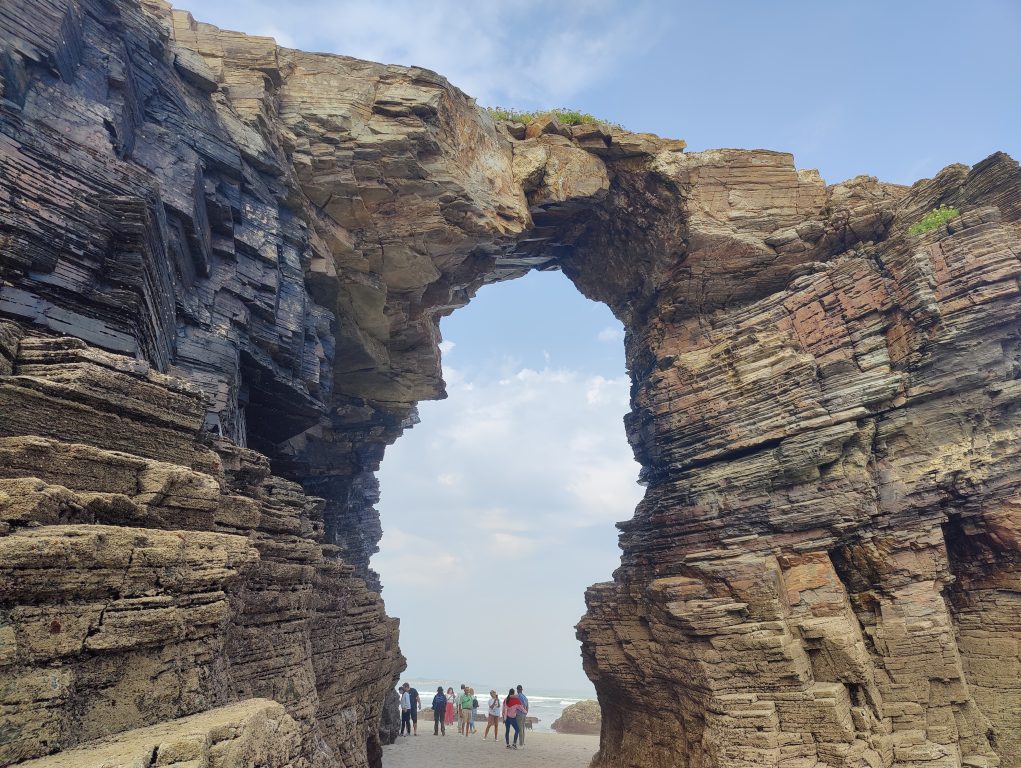
The characteristic features of the beach are its natural arches and caves, which can be seen only at low tide. During high tide, the beach appears small, but still suitable for swimming. During low tide the size of its cliffs and sea caves is more apparent, ranging from small cracks in the rock to big caves whose roofs have collapsed due to the erosion of the waves.
At low tide, there is access to a sand deposit delimited by a rocky wall made from slate and schist forming 30m arches resembling cathedral flying buttresses, large caves, sand corridors between rocky blocks, and other geological features.
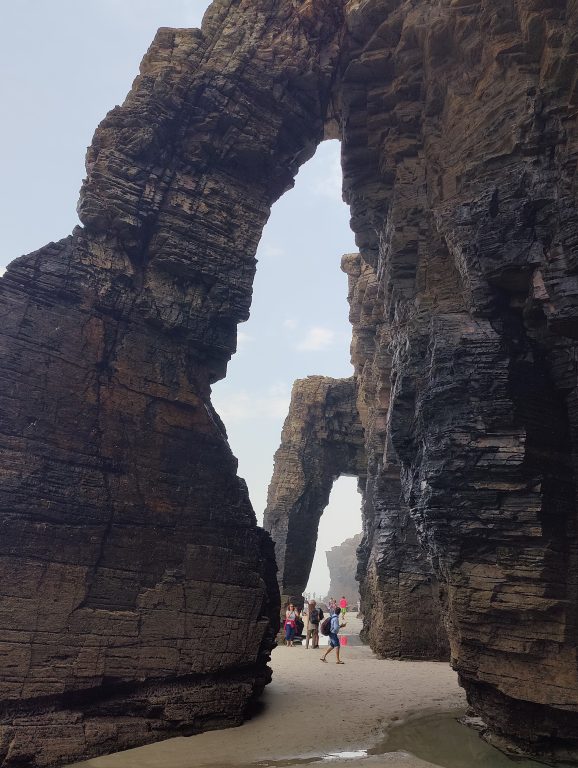
Particularly low tides create access to nearby beaches through the sand extension. As the coast stretch is almost horizontal, the water covers the beach again very quickly.
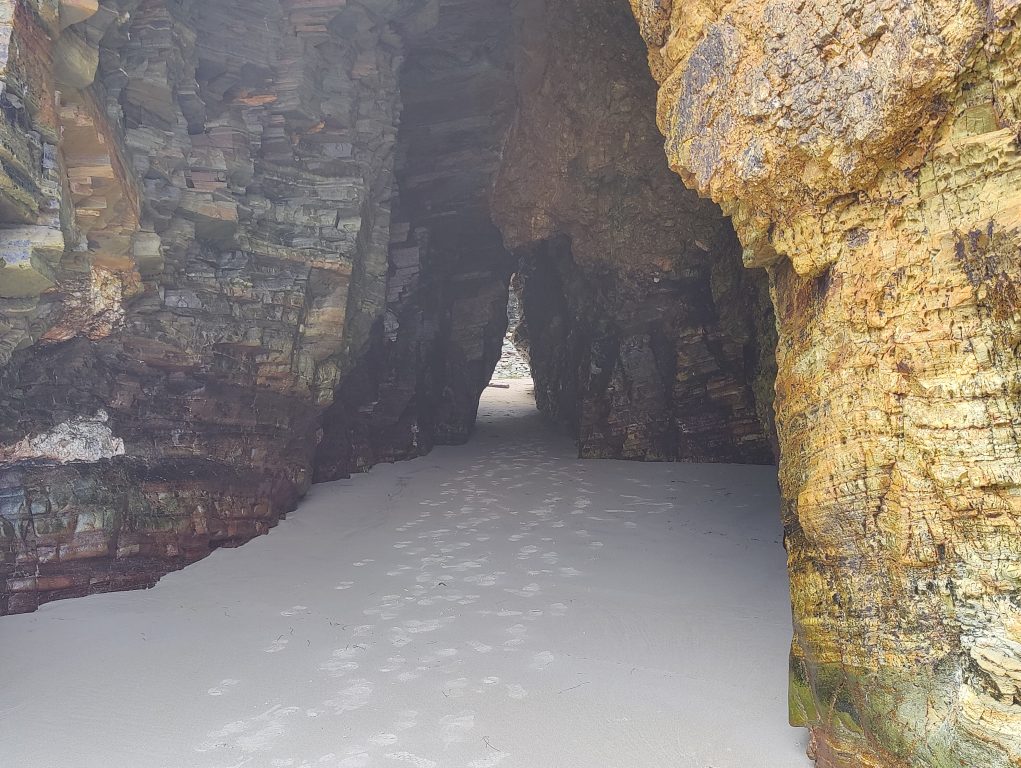
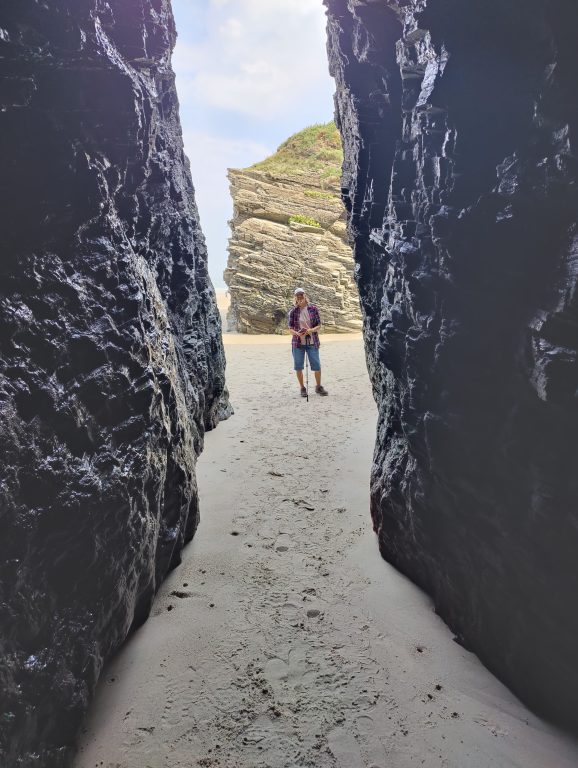
These are Gooseneckbarnacles that proved such a huge hit the previous day at Bar Portillo.
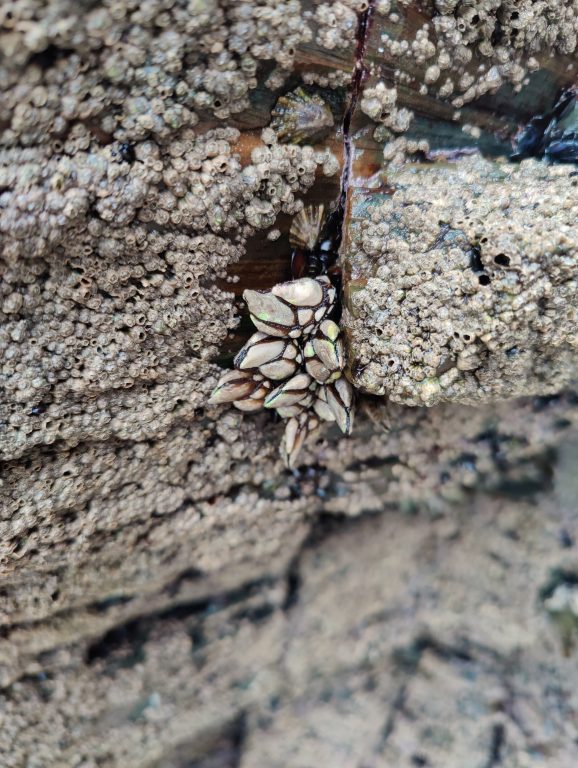
Some more pictures below. If you want to see any in more detail, just click on the individual image.



























